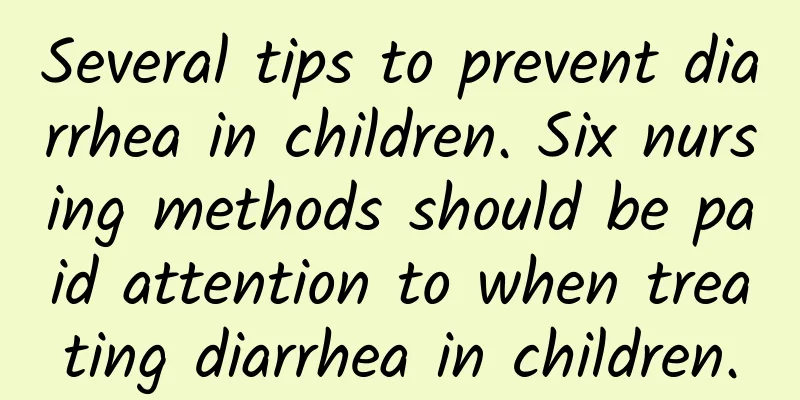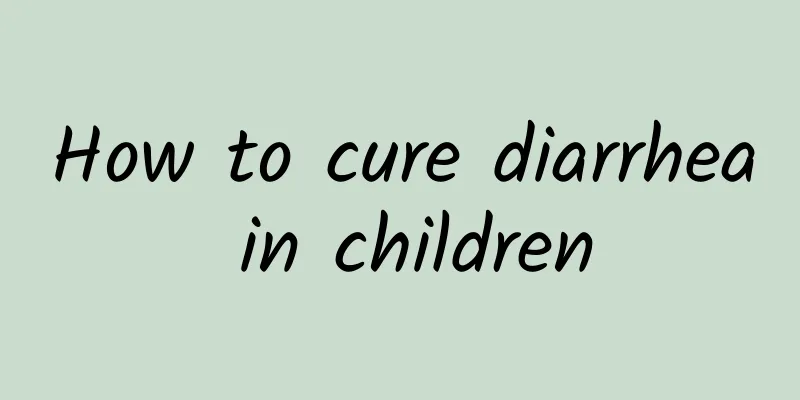What are the nursing measures for Kawasaki disease?

|
In daily life, we should learn more about some common knowledge about diseases so that we can deal with them well and reduce a lot of unnecessary troubles. Take Kawasaki disease as an example. Failure to treat it in time will cause the disease to become more serious. The following introduction is about the care measures for Kawasaki disease. I hope it can help everyone. 1. Fever care Physical cooling is the main method for high fever. After admission, physical cooling is combined with routine aspirin treatment. Children in the acute stage should absolutely stay in bed to reduce metabolism and energy consumption. Warm water baths are often used, and ice pillows or ice patches are placed on the head. The parts where large blood vessels run can also be rubbed gently and repeatedly to increase the cooling effect. The body temperature should be checked again 1-2 hours after cooling treatment. When the fever subsides, there is a lot of sweating and a large amount of water loss. Feed more or intravenous fluids, change sweaty clothes and sheets in time, and keep the skin clean and dry. 2. Diet care Because children have fever and oral mucosal ulcers that affect their appetite, older children should be encouraged to eat and given high-calorie, high-vitamin, nutritious and easily digestible liquid or semi-liquid diets. Children are encouraged to drink plenty of water and avoid eating overheated, salty, hard or spicy foods to reduce irritation to the oral mucosa. 3. Cardiovascular care Kawasaki disease mainly affects the cardiovascular system. The child's complexion and mental state should be closely observed, heart rate should be measured and heart sounds should be listened to regularly, and electrocardiogram, cardiac B-ultrasound, echocardiogram and blood myocardial enzyme tests should be performed regularly. When the myocardium is damaged, the child should be advised to stay in bed and rest. The infusion rate should be strictly controlled, and an infusion pump should be used when necessary. 4. Skin and mucous membrane care The child develops a rash 1-3 days after fever, which manifests as scarlet fever-like rash, maculopapular rash or erythema multiforme-like rash, which is more common on the trunk. Pay attention to the disappearance and progression of the rash, keep the skin clean, wash the buttocks with warm water every day, and apply tannic acid ointment. Cut nails frequently to prevent scratches. When desquamation occurs, warn parents not to tear it artificially to damage the integrity of the skin. The skin should be allowed to fall off on its own. Wear cotton underwear, keep the bed clean, dry, flat, and free of debris. Apply disinfectant paraffin oil to chapped lips. For older children, give 1% to 2% sodium bicarbonate solution or saline to rinse the mouth, and give oral care to those who cannot cooperate. |
<<: How to prevent recurrence of Kawasaki disease
>>: What are the nursing methods for Kawasaki disease?
Recommend
What causes hand, foot and mouth disease in children?
Hand, foot and mouth disease in children is an ac...
What should I do if my child coughs and has phlegm?
Children's cough with phlegm may be related t...
What are the symptoms of white spots
The symptoms of white spots are often confusing b...
Should I take Oseltamivir for 3 or 5 days?
Some patients will use oseltamivir for treatment ...
What is severe breast milk diarrhea?
Severe breast milk diarrhea is a very common dise...
How to cure pseudo-jaundice yellow skin? Three ways to treat pseudo-jaundice yellow skin
Pseudo-jaundice can cause our skin to look yellow...
Types of neonatal jaundice Why is jaundice in children not treated?
1. Physiological jaundice Usually, the skin of a ...
Is hand, foot and mouth disease contagious during the incubation period?
Hand, foot and mouth disease is contagious during...
Is the baby's cough and fever pneumonia?
Pneumonia in children is relatively common and is...
What are the key points of nursing for breast milk diarrhea?
What are the key points of nursing for breast mil...
What should I do if my six-month-old baby coughs and has phlegm? What are the ways to prevent babies from coughing?
If a six-month-old child has symptoms such as cou...
Can hand, foot and mouth disease turn into pneumonia?
Hand, foot and mouth disease generally does not t...
What to do if your baby has a stuffy nose? 9 effective ways to treat a stuffy nose in your baby
Babies have relatively poor resistance, so they a...
What medicine is usually taken for neonatal jaundice
Neonatal jaundice needs to be evaluated by a doct...
Phenylketonuria details
How much do you know about the details of phenylk...









